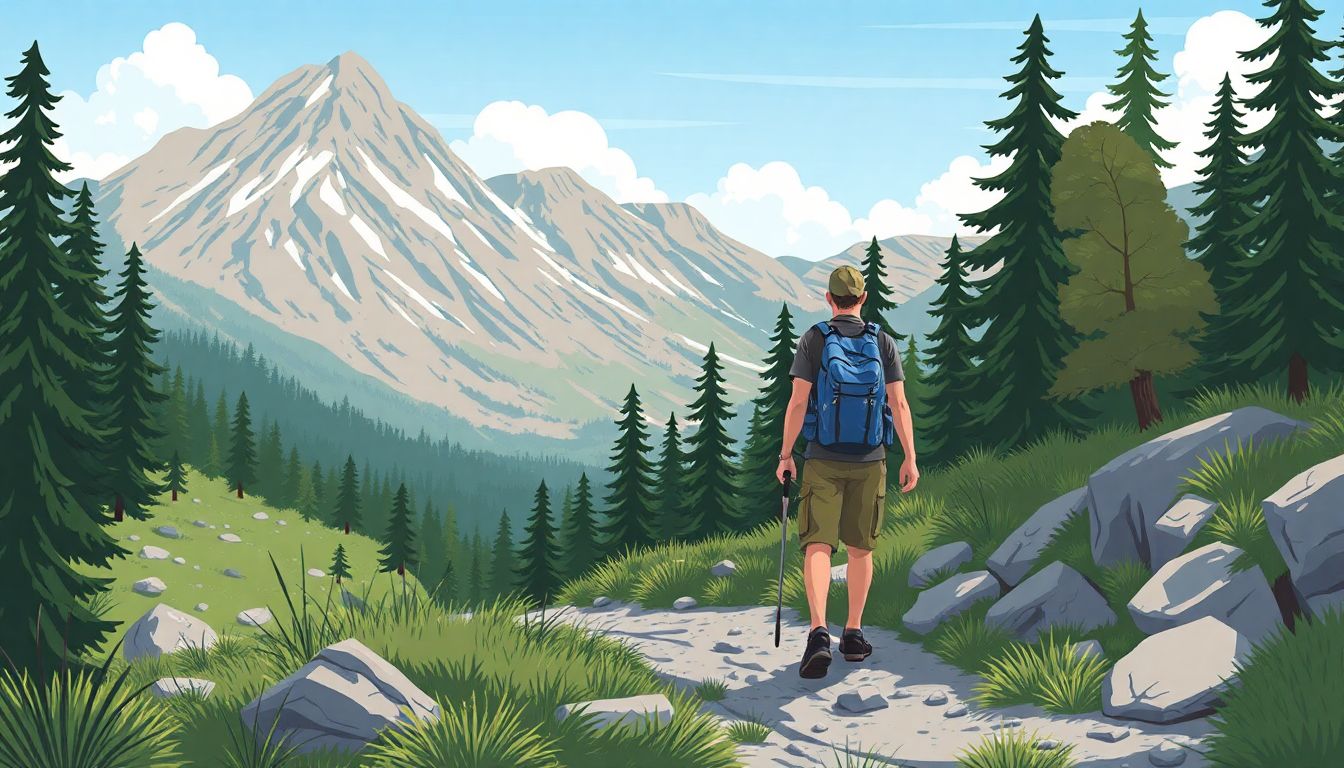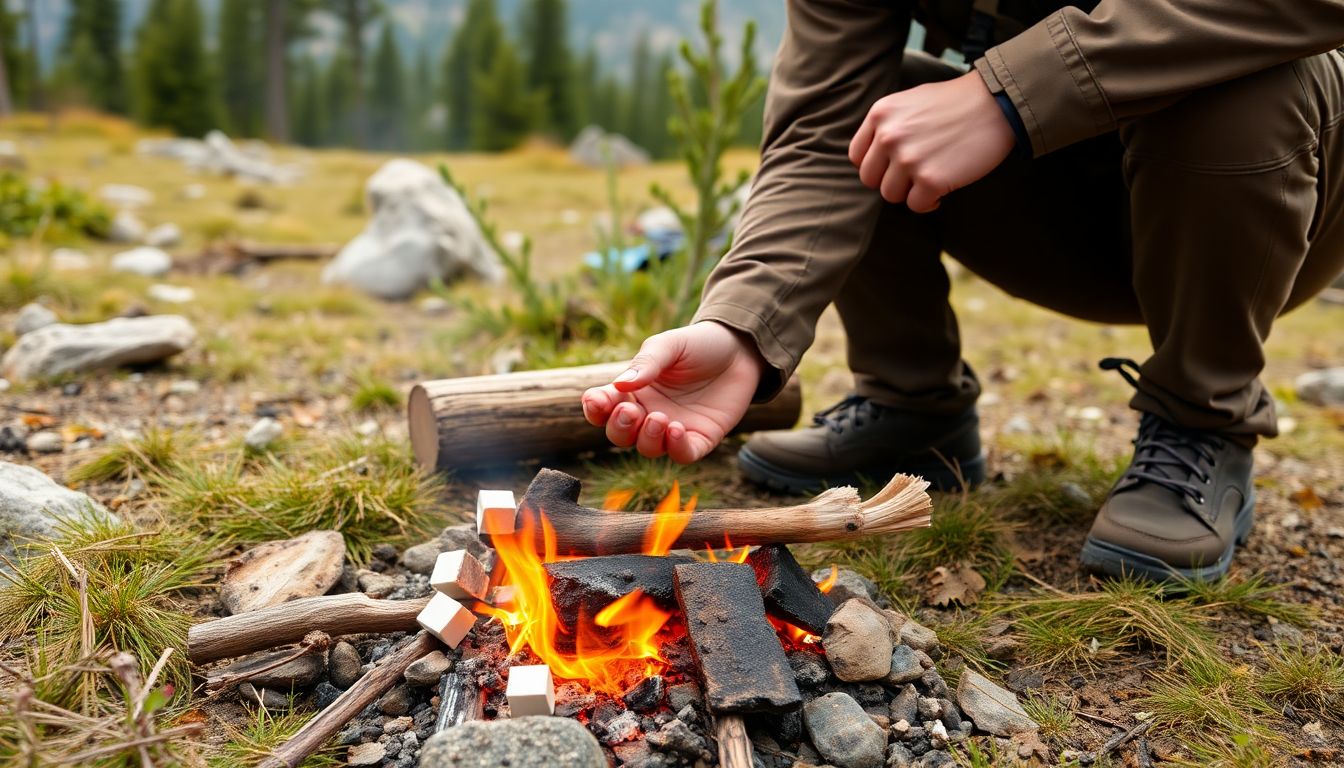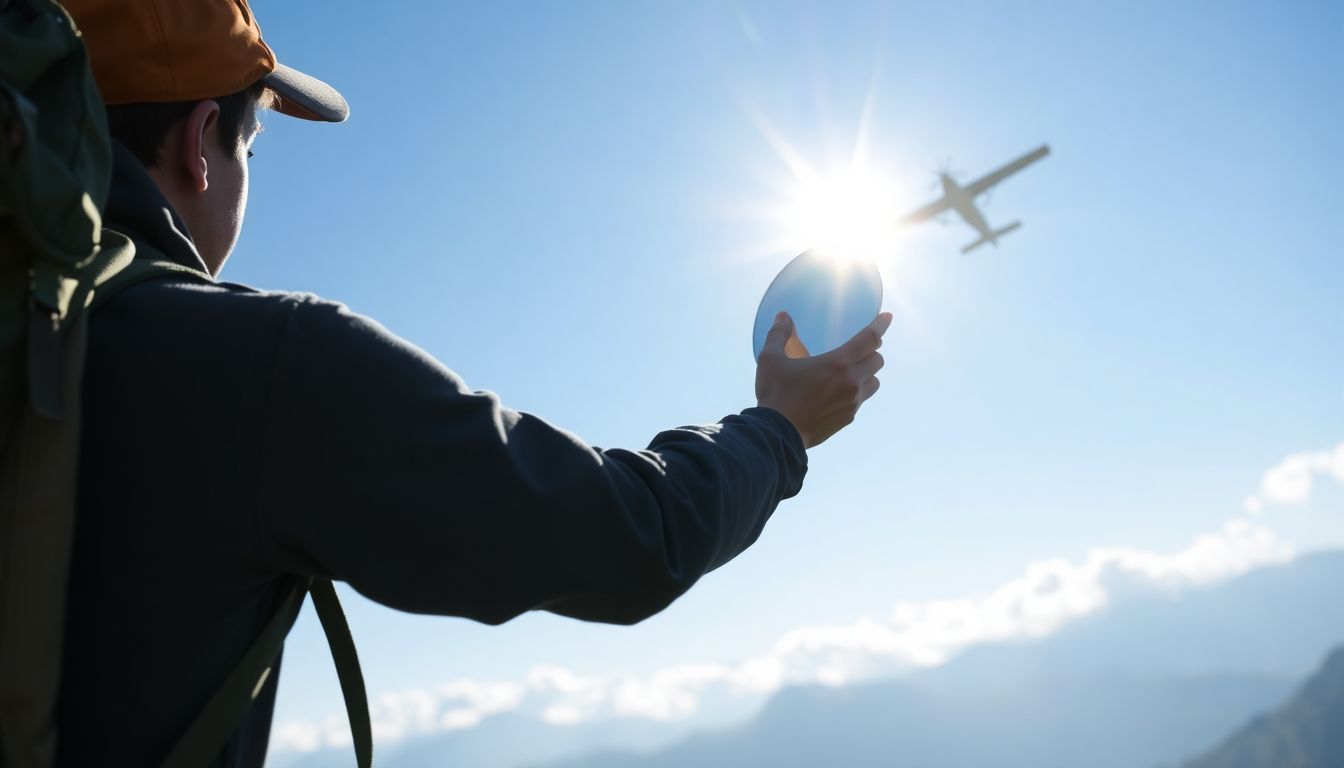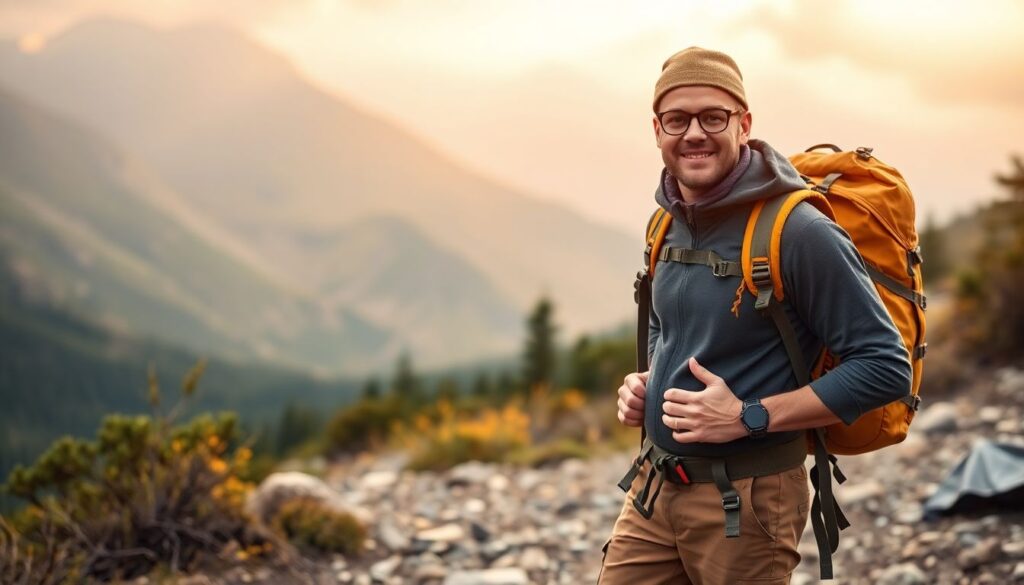Embarking on a hike should be an exciting adventure, but it’s crucial to be prepared for the unexpected. In this article, we’ll share essential survival skills and tools recommended by experts from the Thomas Coyne Survival School. Whether you’re a seasoned hiker or a casual day tripper, these tips will ensure you’re ready for anything nature throws your way.
Expert tips from the Thomas Coyne Survival School to keep you safe and prepared on the trail.
The hiker stands tall and assured at the trailhead, a figure of preparedness and resolve. Clad in moisture-wicking apparel and sturdy, well-worn boots, they carry a carefully packed backpack containing the essentials: a topographic map encased in a waterproof pouch, a reliable compass, and a fully charged headlamp with extra batteries. A multi-tool rests in their pocket, and a first aid kit is secured at their hip. A weather-resistant jacket is folded neatly at the top of their pack, ready for the ever-changing elements. Leaning against their side is a durable pair of trekking poles, and a reusable water bottle and purification tablets are within easy reach.
Their eyes scan the path ahead, taking in the rugged terrain and the challenges it presents. With a whistle secured around their neck and a supply of high-energy snacks tucked away, they embody a sense of self-reliance and readiness. The sun is rising, casting a warm glow over the landscape, and the hiker takes a deep breath, embracing the solitude and the promise of adventure. They are not just equipped with gear; they are armed with knowledge, experience, and a deep respect for nature’s unpredictability. As they take their first steps, they embody the spirit of exploration and the timeless allure of the wilderness.

The Importance of Preparedness
Being prepared for outdoor emergencies is not just a precaution, but a necessity that can spell the difference between a minor inconvenience and a major catastrophe. The significance of preparedness cannot be overstated, as it equips individuals with the tools and knowledge to navigate unexpected situations. In the context of day hiking, preparation is often the line between a pleasant outing and a crisis. The wilderness can be unpredictable, and even the most experienced hikers can encounter difficulties. Having the right skills and tools ensures that hikers can manage risks effectively, from handling injuries to navigating harsh weather conditions.
One of the common pitfalls of day hikers is underestimating the environment. Many hikers set out with the assumption that their excursion will be short and uneventful, leading them to neglect essential preparations. This mindset can result in several missteps, such as:
- Inadequate water and food supplies: Dehydration and hunger can impair judgment and physical abilities, making it difficult to navigate or seek help.
- Lack of appropriate clothing: Weather conditions can change rapidly, and without proper attire, hikers may be exposed to hypothermia or heat exhaustion.
- Insufficient navigation tools: Relying solely on mobile phones for navigation can be risky, as batteries can die, and signals can be lost in remote areas.
On the positive side, being well-prepared offers numerous advantages. Firstly, it instills confidence, allowing hikers to enjoy their adventure without constant worry. Secondly, it promotes safety, reducing the likelihood of serious incidents and enhancing the overall experience for everyone involved. Essential tools and skills for day hikers include:
-
First aid kit:
A well-stocked kit can help manage minor injuries and stabilize major ones until professional help arrives.
-
Map and compass (or GPS):
Proficiency in using these tools ensures that hikers can stay on track and find their way back if lost.
-
Emergency shelter and fire-starting tools:
These can provide crucial protection and warmth in case of unexpected overnight stays.
-
Knowledge of survival skills:
Understanding basic survival principles, such as signaling for help and finding water, can be invaluable in emergency situations.
While it may seem like a lot to carry and learn, the benefits far outweigh the inconveniences. Being prepared is not about anticipating the worst but rather ensuring that, should the worst happen, one is equipped to handle it effectively.

Essential Fire Building Tools
In the realm of survival situations, the ability to build a fire is often not just a comfort, but a necessity. A well-crafted fire can mean the difference between life and death, providing a crucial source of heat, light, and protection. It can boil water to make it potable, cook food to make it edible, and keep both predators and pesky insects at bay. Moreover, a fire serves as a companionship tool, offering a sense of security and morale boost in the loneliest of nights. Its smoke can also act as a visible signal for potential rescuers, making it a vital part of any survival strategy.
To ensure success in fire building, especially in challenging conditions, a few essential tools can make all the difference. Firstly, starter cubes are an excellent resource, offering a compact and easy-to-use solution for quickly igniting a flame. Secondly, waterproof matches are a must-have, providing reliability in damp or rainy environments where standard matches would fail. These matches are typically windproof as well, adding an extra layer of dependability. Here’s a fun anecdote to illustrate their effectiveness: In a survival training exercise, an instructor tossed a few waterproof matches into a puddle, leaving trainees bewildered. To their amazement, the matches lit up without a hitch, driving home the point about being prepared with the right equipment.
However, it’s essential to weigh the pros and cons of these tools. On the positive side, starter cubes and waterproof matches are:
- Easy to use, even for those without extensive fire-building experience.
- Reliable in a variety of weather conditions.
- Compact and lightweight, making them portable and convenient to carry.
On the negative side, they also present a few drawbacks:
- Both items are consumable, meaning they will eventually run out and require resupply.
- They can be expensive, especially for high-quality, long-lasting products.
- There’s a risk of over-reliance on these tools, potentially hindering the development of more traditional fire-starting skills.
Despite these drawbacks, the advantages often outweigh the disadvantages, making starter cubes and waterproof matches invaluable additions to any survival kit.

Critical Signaling Equipment
In any outdoor adventure or emergency situation, signaling for rescue is of paramount importance. Being able to attract attention to your location can make the difference between a swift rescue and a prolonged ordeal. Signaling devices are not just accessories; they are vital tools that ensure your visibility and audibility to potential rescuers. Whether you are lost in the wilderness, stranded at sea, or trapped in an urban disaster zone, having the right signaling tools can significantly enhance your chances of being found and rescued.
Among the essential signaling tools, whistles stand out for their simplicity and effectiveness. Whistles produce high-pitched sounds that can travel long distances, making them ideal for attracting attention in both terrestrial and aquatic environments. They are lightweight, compact, and require minimal effort to use, even when injured. Additionally, signal mirrors are invaluable for daytime signaling. These mirrors can reflect sunlight to create a bright flash that can be seen from far away. They are particularly useful in open areas where line of sight is unobstructed. However, their effectiveness is limited in low-light conditions or dense foliage.
For more versatile and durable options, consider flagging tape and flares. Flagging tape is a brightly colored, lightweight material that can be tied to trees, rocks, or other stationary objects to mark your location or trail. It is highly visible and can withstand various weather conditions. Flares, on the other hand, provide a powerful visual signal, especially in low-light or nighttime situations. They come in various forms, including handheld, aerial, and smoke flares, each suited to different environments and rescue scenarios. However, flares have a limited burn time and should be used judiciously. Here are some recommendations for essential signaling tools:
- Carry a whistle with a lanyard to keep it easily accessible.
- Choose a signal mirror with a sighting hole for accurate aiming.
- Pack brightly colored flagging tape that contrasts with the environment.
- Include a variety of flares in your emergency kit, considering factors like burn time, visibility, and storage safety.
FAQ
Why is fire building so important in survival situations?
- It provides warmth and protection from exposure, the number one killer in the outdoors.
- It can be used to signal rescuers.
- It allows you to boil water and cook food.
- It offers a sense of safety and security, boosting morale.
What are some common mistakes day hikers make?
- Not bringing enough water or food.
- Not carrying a map or knowing the trail.
- Not checking the weather forecast.
- Not having basic first aid knowledge or supplies.
- Not informing anyone of their hiking plans.
How can I effectively signal for help?
- Use a whistle to make three short blasts, the international signal for distress.
- Use a signal mirror to reflect sunlight towards potential rescuers.
- Create ground-to-air signals using flagging tape and sticks to form triangles, employing the rule of three for signaling distress.
- Use signal flares sparingly and wisely, as they are not reusable.
What should I look for in a water filtration system?
- Effectiveness in removing bacteria and viruses.
- Ease of use and portability.
- Durability and reliability in various conditions.
- Compatibility with your water container.
Additionally, consider using a combination of filtration systems and purification tablets for added protection.









